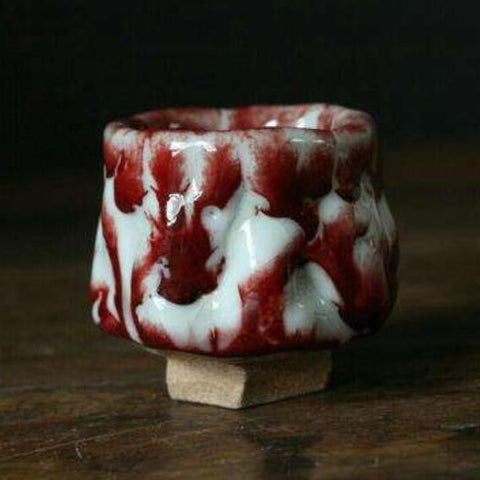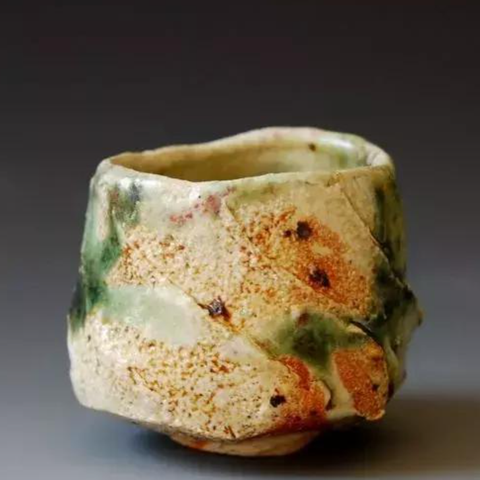
"Shinoyaki" is nicknamed "Burned Porcelain". They are unique in shape and have a history of thousands of years.
Shino in Japanese means the red, red and white glaze on the tiles. The development of Shino-yaki has a history of more than 400 years in Japan. Its characteristics lie in the warm and moist glaze color like white jade, the cream-like glaze, the cracked ice texture, the natural and splendid body, and the heroic workmanship. The hand marks, fire marks and wormhole texture left over from the production process are all touching. The white glaze perfectly presents the brown color, and the tea people admire and enrich the appearance of Shino pottery. Today's Shino ware is even more highly regarded in the collection world and is invaluable.
Today, it is also a highly regarded collectible all over the world, so why is Shino ware so valuable? There are three reasons for this.
The first reason is the uniqueness of Shino-yaki. Although porcelain was made in China, people at that time did not make pure white glaze due to backward technology. It was not until the Southern and Northern Dynasties that the production method of white glaze was discovered by craftsmen.
Although the Japanese learned the technique of firing porcelain, they did not master the more advanced method of firing white glaze. The craftsmen at that time could only play their creations again with the only technology and production materials. In the production of fetal soil, they sometimes use a special kind of "mug soil", which is white and green, and the texture is extremely soft. , and sometimes other local special materials... Next, they put a variety of old rock mud embryos formed by hand-pulling into the high-temperature cellar for firing
In the kiln, the porcelain itself will change with the temperature, and the glaze of the porcelain will also change in different colors. In addition, the local materials are different, and the porcelain skills mastered are different, so the porcelain taken out from the pit furnace is also unique, and there is no repeated appearance. At first, some people ridiculed it as "burned porcelain", because the porcelain produced could not reach the appearance of batches of perfect porcelain produced in the mature cellar furnaces in China. However, as the shape of Shino-yaki becomes more and more unique and exquisite, and it is the first batch of local porcelain in the local area, it is loved by many dignitaries.

The second reason lies in the simplicity and charm of the Shino-yaki shape. The oldest existing batch of Shino-yaki, also known as "white eyes", has no lines on its plain surface, and is extremely simple. Because of its simple and elegant artistic conception, it has been collected by many famous artists. And Shino in the Momoyama era had many "fans". Because the white glaze at this time is completely made of "feldspar", it is thick and moist, and the glaze surface randomly shows red "fire color" and orange peel-like "brown eyes". If you put tea in it, because of the different types of tea leaves, the color of the tea soup will also be different, which makes Shinoyaki extraordinarily restrained and elegant, making collectors love them even more.
The third reason is the presence of chemical factors. Although there was no knowledge of chemistry and physics in ancient times, people found that the tea soup would be clearer and more delicious when the ceramic teacups and tea leaves were soaked. How is this going? It turns out that the tea cups made by Shino-yaki contain a large amount of "ferrous iron" and "trivalent iron ions", which interact with the "tannins" and "theophylline" in the tea to super soften the water. For example, when the ancients boiled water, when the tea was boiled, they would find that there was a lot of water and alkali at the bottom, and the boiled water was "softening the water quality", but the power of Shino-yaki can greatly improve the rejuvenation of the tea soup, so that the The water is clear and thick, and the taste is vast and long.



